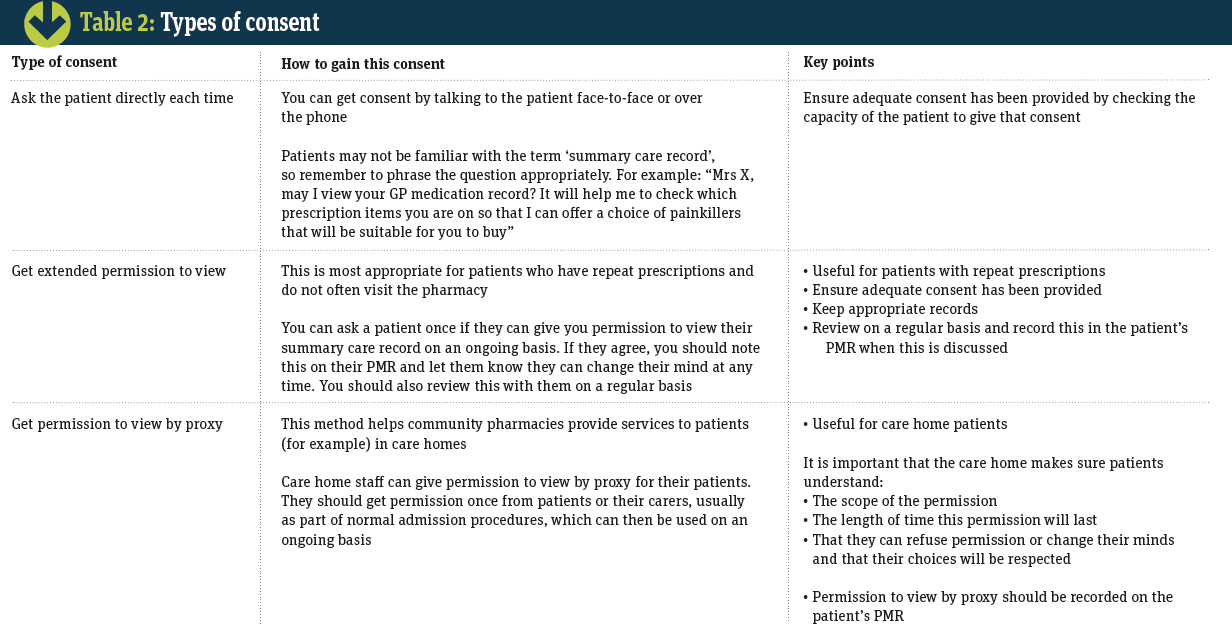Permission to view SCRs
In order to view a patient’s SCR, a number of criteria must be fulfilled:
- Authorisation is needed to access the SCR, using a NHS smartcard and passcode. Pharmacists will log in with their smartcard and have the appropriate roles designated to it. Newly qualified pharmacy professionals need to have the SCR role assigned to their smartcard by submitting a request to NHS Digital using the online SCR role request form
- Pharmacists can only access SCRs for patients with whom they are involved in their care and when there is a clinical need to do so. This is called having a ‘legitimate relationship’. In a community pharmacy setting where the pharmacy is nominated and providing an ongoing episode of care by dispensing repeat prescriptions or preparing dosette trays, for example – these are all ongoing legitimate relationships. A legitimate relationship would also be in place when a patient seeks advice over-the-counter or on the telephone
- A pharmacist cannot view their own SCR, as they would not have a legitimate relationship with themselves for the purposes of direct care
- Access to the SCR should only take place once a pharmacist has ‘permission to view’. This involves gaining informed explicit consent from the patient to view their record. In a community pharmacy setting, because an ongoing episode of care may be being provided, extended permission can be sought to view the SCR for as long as there is a legitimate relationship. This can mean that explicit consent is not necessarily needed on every occasion to view the SCR. Consent is usually verbal but can be written. The system will ask for confirmation that the patient’s consent has been obtained (includes extended permission to view) before access to the patient’s record is allowed
- In the case of an emergency when verbal consent can’t be gained (e.g. if a patient is unable to give consent or where there are communication difficulties between pharmacy professional and patient), access to the SCR is allowed if it is in the patient’s best interest
- Once the SCR is accessed, a record should be made of the subsequent advice and action taken (e.g. a note in the PMR). There are three types of consent that can be obtained from a patient. The different types of consent are appropriate for different groups of patients or scenarios. Table 2 (below) highlights these differences.
Remember:
- For any type of consent given by patients, it is good practice to record the date on which consent was given and the identity of the person giving that consent
- Representatives can only give consent on a patient’s behalf if they have the relevant power of attorney
- Parents can give consent for access to their child’s SCR
- A child with the capacity to understand and give consent in their own right may do so.

